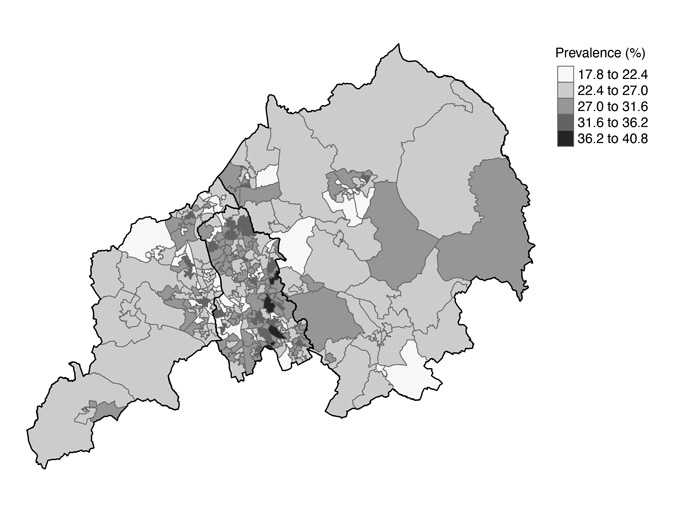Pain in different parts of the body
There are two maps for each of the following sections – pain in different parts of the body, factors that impact on MSK problems, other health conditions, physical activity and informal care. The colour maps present the amount of each health issue in each area. The second map, in grey, presents the amount in comparison to the other areas and in this we can highlight which areas have lower and higher levels.
Back pain (colour)
- The map shows the proportion of people in each area who have experienced moderate to severe chronic back pain; this is back pain that has occurred on most or all days in the past 6 months and is considered to be moderately or severely painful by those who experience. The proportion for areas varies from 6.1% to 25.0%. On the map the lighter orange areas are where between 1 and 15 and 1 in 10 people experience moderate to severe chronic back pain. In the darker orange areas around 1 in 4 people experience moderate to severe chronic back pain.
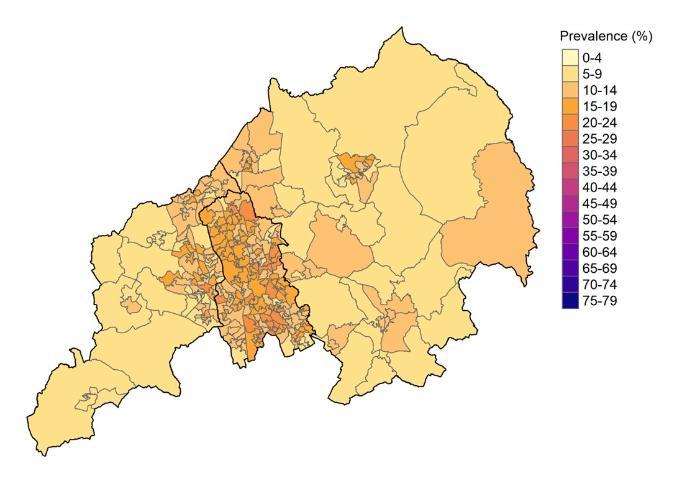
Neck pain (colour)
- The map shows the proportion of people in each area who have experienced moderate to severe chronic pain in their NECK; this is neck pain that has occurred on most or all days in the past 6 months and is considered to be moderately or severely painful by those who experience it. The proportion for areas varies from 2.5% to 11.1%. On the map the lighter yellow areas are where between 1 in 40 and 1 in 20 people experience moderate to severe chronic knee pain. In the orange areas around 1 in 10 experience moderate to severe chronic neck pain.
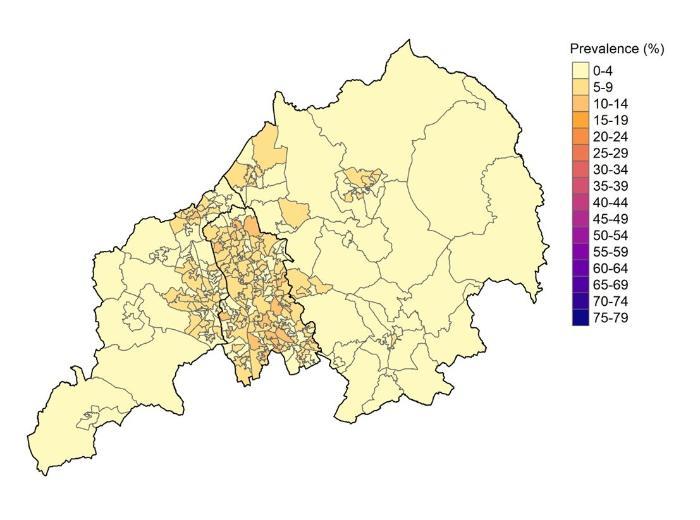
Knee pain (colour)
- The map shows the proportion of people in each area who have experienced moderate to severe chronic pain in their KNEE; this is knee pain that has occurred on most or all days in the past 6 months and is considered to be moderately or severely painful by those who experience it. The proportion for areas varies from 4.6% to 19.7%. On the map the lighter areas are where between 1 in 20 and 1 in 10 people experience moderate to severe chronic knee pain. In the darker orange areas almost 1 in 5 people experience moderate to severe chronic knee pain.
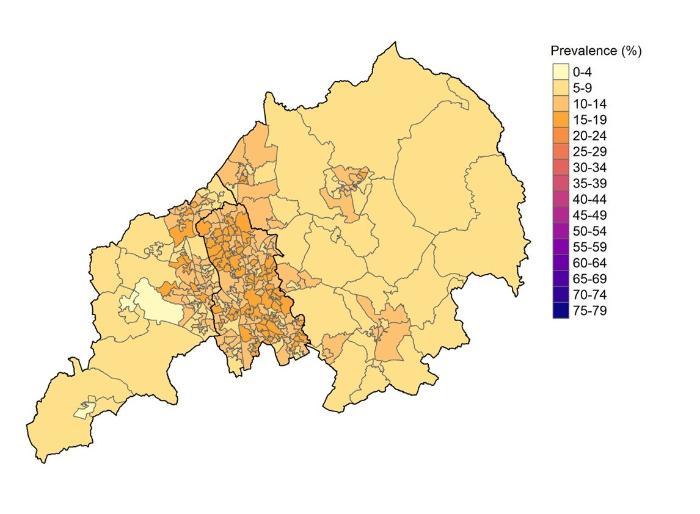
Hip pain (colour)
- The map shows the proportion of people in each area who have experienced moderate to severe chronic pain in their HIP; this is hip pain that has occurred on most or all days in the past 6 months and is considered to be moderately or severely painful by those who experience it. The proportion for areas varies from 2.6% to 14.3%. On the map the lighter yellow areas are where between 1 in 40 and 1 in 25 people experience moderate to severe chronic hip pain. In the orange areas around 1 in 8 people experience moderate to severe chronic hip pain.
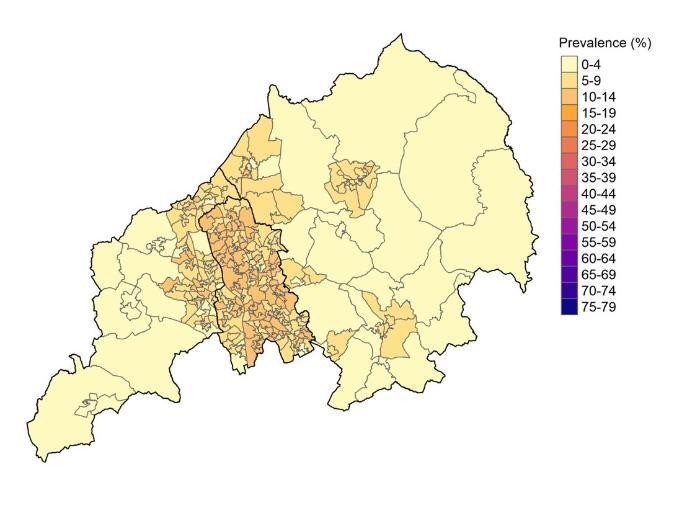
Foot and/or ankle pain (colour)
- The map shows the proportion of people in each area who have experienced moderate to severe chronic FOOT AND/OR ANKLE pain; this is ankle and/or foot pain that has occurred on most or all days in the past 6 months and is considered to be moderately or severely painful by those who experience. The proportion for areas varies from 5.8% to 18.3%. On the map the lightest orange areas are where between 1 and 17 and 1 in 11 people experience moderate to severe chronic ankle and/or foot pain. In the darkest orange areas around 1 in 6 people experience moderate to severe chronic ankle and/or pain.
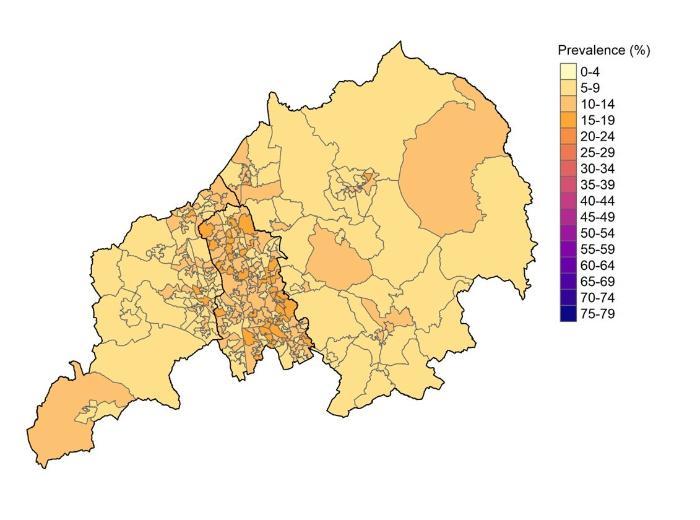
Shoulder pain (colour)
- The map shows the proportion of people in each area who have experienced moderate to severe chronic pain in their SHOULDER; this is neck pain that has occurred on most or all days in the past 6 months and is considered to be moderately or severely painful by those who experience it. The proportion for areas varies from 3.0% to 17.2%. On the map the lighter orange areas are where between 1 in 30 and 1 in 20 people experience moderate to severe chronic shoulder pain. In the darker orange areas around 1 in 6 experience moderate to severe chronic shoulder pain.
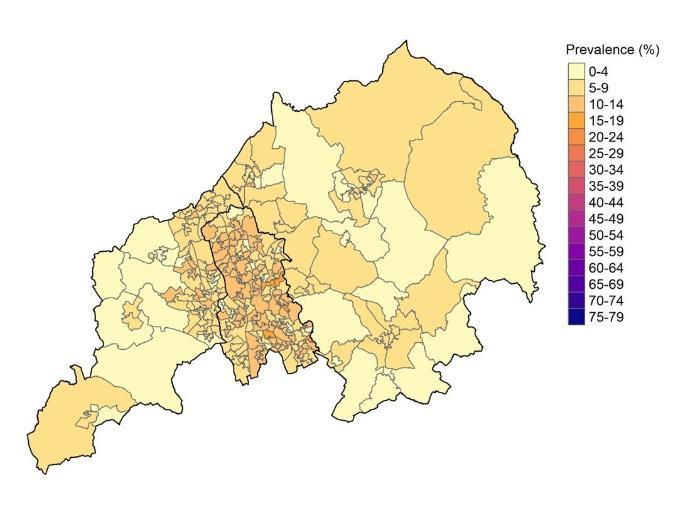
Moderate to severe chronic hand and/or wrist pain (colour)
- The map shows the proportion of people in each area who have experienced moderate to severe chronic pain in their HAND AND/OR WRIST; this is hand and/or wrist pain that has occurred on most or all days in the past 6 months and is considered to be moderately or severely painful by those who experience it. The proportion for areas varies from 3.7% to 17.0%. On the map the lighter yellow areas are where around 1 in 25 people experience moderate to severe chronic hand and/or wrist pain. In the darkest orange areas between 1 in 7 and 1 in 6 people experience moderate to severe chronic hand and/or wrist pain.
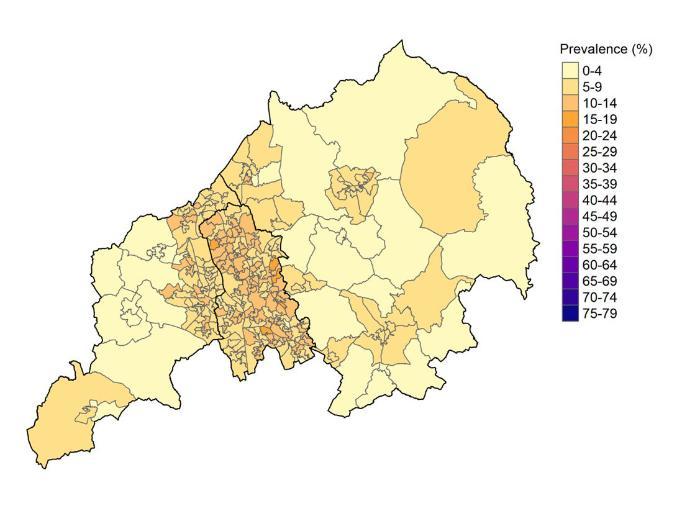
Chronic widespread pain (colour)
- This map shows the proportion of people aged 35 and over who live in each area who experience pain in their arms AND legs AND neck or back on most or all days during a six month period. This ranges from 2.5% to 22.1%. on the maps the lighter yellow areas are where there are between 1 in 40 and 1 in 25 people who experience chronic widespread pain. In the darkest orange areas there were around 1 in 5 people aged 35 and over who experienced chronic widespread pain.
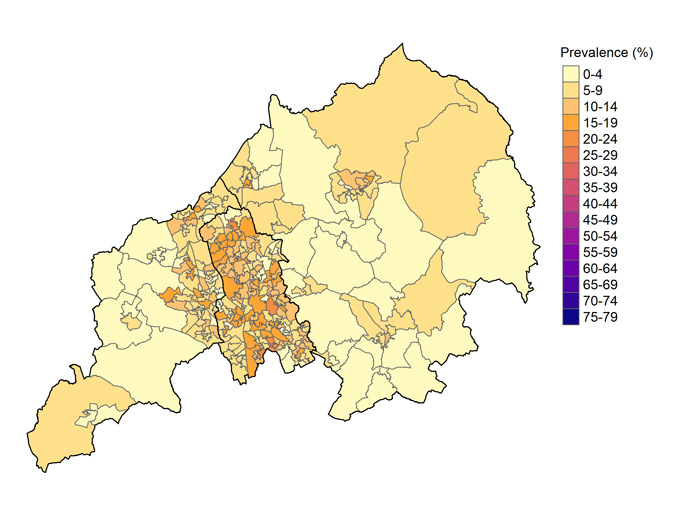
Osteoarthritis (colour)
- The map shows the proportion of people aged 35 and over in each area who have been told by their doctor that they have osteoarthritis. The proportion for areas varies from 17.8% to 40.8%. On the map the lighter orange areas are where around 1 in 5 people have been told by their doctor that they have osteoarthritis. In the darker pink areas between 1 in 3 and 1 in 2 people have been told they have osteoarthritis by their doctor.

Back pain (grey)
-
This extra version of the map is tailored to show the difference in back pain between neighbourhoods more clearly. Back pain is most common in the areas shaded in the darkest grey. Back pain is least common in the areas shaded in the lightest grey.
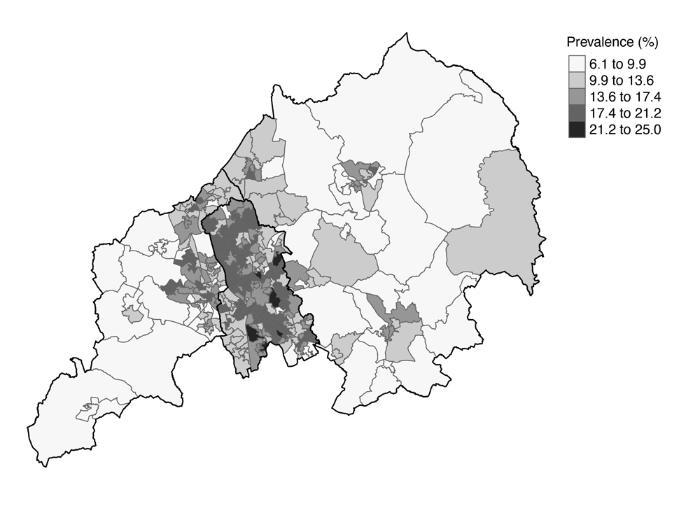
Neck pain (grey)
-
This extra version of the map is tailored to show the difference in neck pain between neighbourhoods more clearly. Neck pain is most common in the areas shaded in the darkest grey. Neck pain is least common in the areas shaded in the lightest grey.
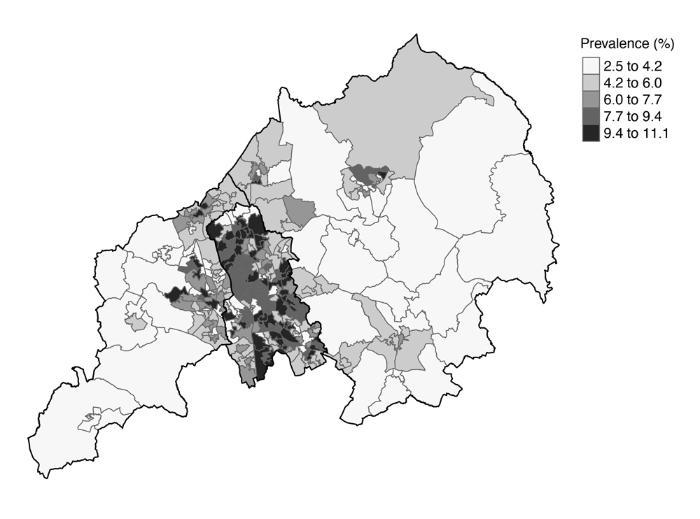
Knee pain (grey)
-
This extra version of the map is tailored to show the difference in knee pain between neighbourhoods more clearly. Knee pain is most common in the areas shaded in the darkest grey. Knee pain is least common in the areas shaded in the lightest grey.
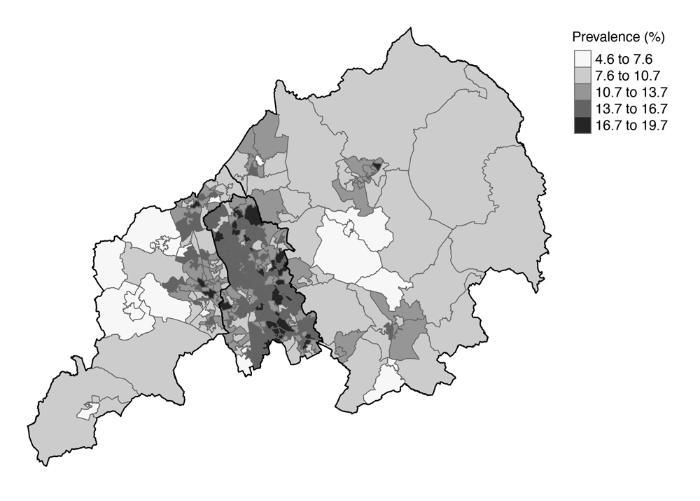
Hip pain (grey)
-
This extra version of the map is tailored to show the difference in hip pain between neighbourhoods more clearly. Hip pain is most common in the areas shaded in the darkest grey. Hip pain is least common in the areas shaded in the lightest grey.
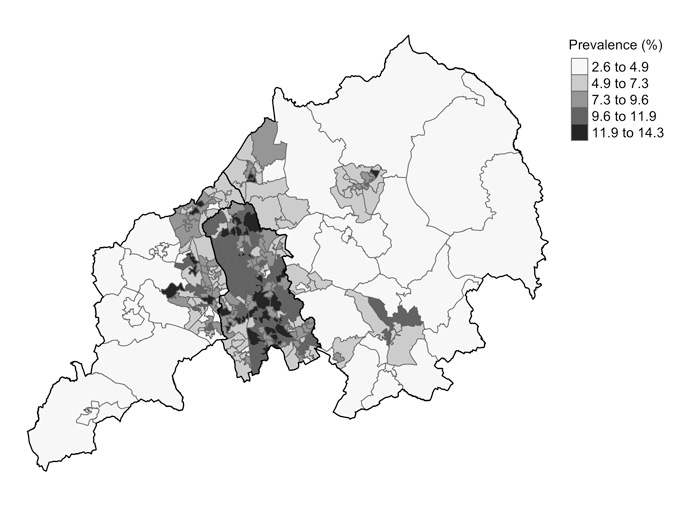
Foot and/or ankle pain (grey)
-
This extra version of the map is tailored to show the difference in foot and/or ankle pain between neighbourhoods more clearly. Foot and/or ankle pain is most common in the areas shaded in the darkest grey. Foot and/or ankle pain is least common in the areas shaded in the lightest grey.
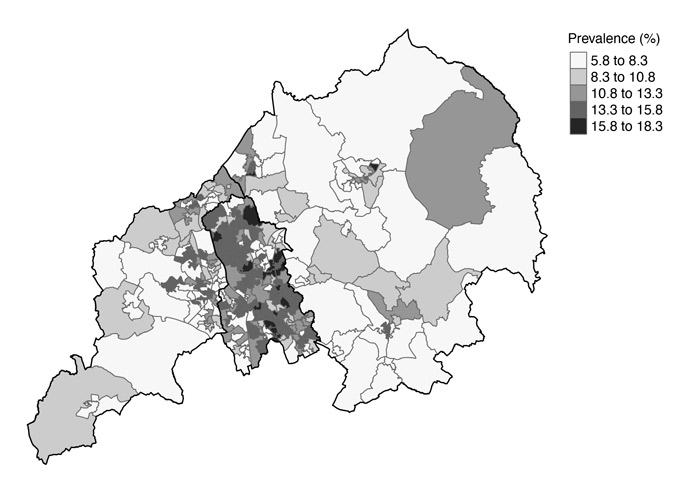
Shoulder pain (grey)
-
This extra version of the map is tailored to show the difference in shoulder pain between neighbourhoods more clearly. Shoulder pain is most common in the areas shaded in the darkest grey. Shoulder pain is least common in the areas shaded in the lightest grey.
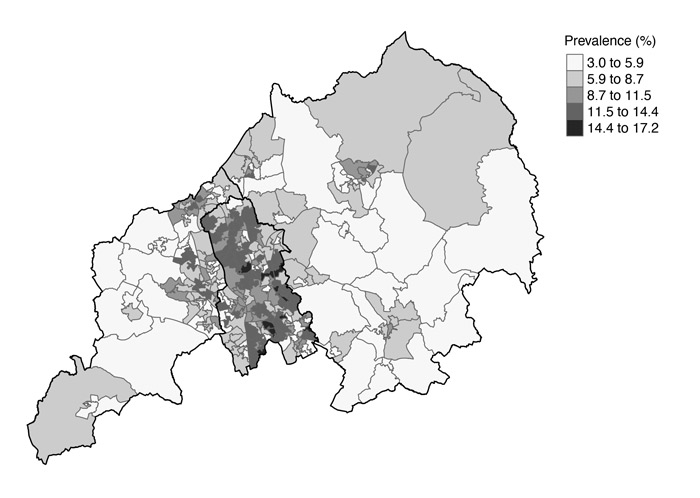
Moderate to severe chronic hand and/or wrist pain (grey)
-
This extra version of the map is tailored to show the difference in hand and/or wrist pain between neighbourhoods more clearly. Hand and/or wrist pain is most common in the areas shaded in the darkest grey. Hand and/or wrist pain is least common in the areas shaded in the lightest grey.
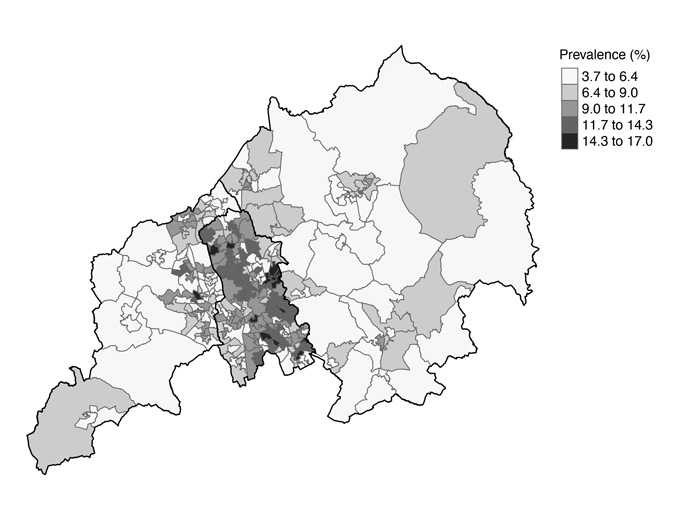
Chronic widespread pain (grey)
-
This extra version of the map is tailored to show the difference in widespread pain (pain in arms and legs and neck or back) between neighbourhoods more clearly. Widespread pain is most common in the areas shaded in the darkest grey. Widespread pain is least common in the areas shaded in the lightest grey.
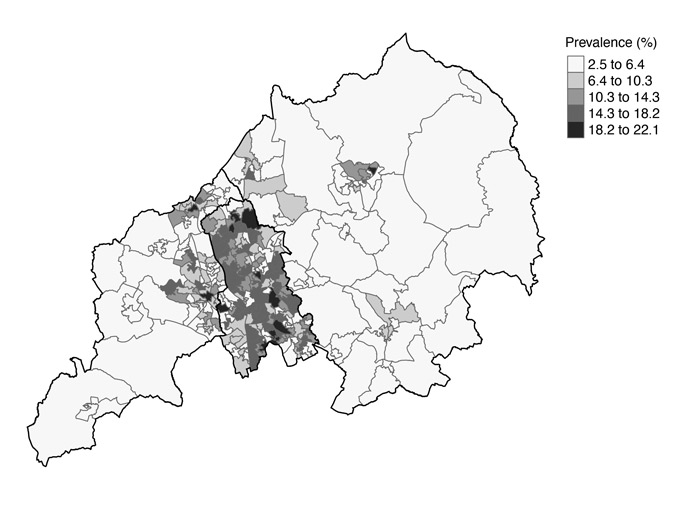
Osteoarthritis (grey)
-
This extra version of the map is tailored to show the difference in osteoarthritis between neighbourhoods more clearly. Osteoarthritis pain is most common in the areas shaded in the darkest grey. Osteoarthritis pain is least common in the areas shaded in the lightest grey.
